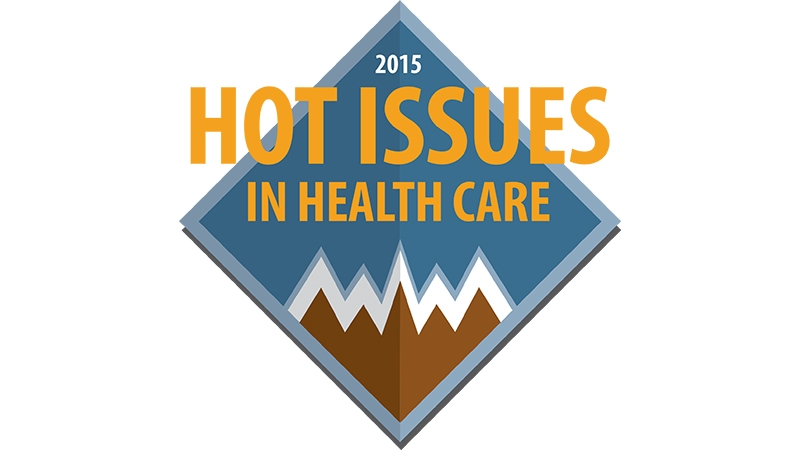Hot Issues in Health Care: Your Travel Guide to a Foreign Land
Leer en español
Hot Issues in Health Care 2015 from the Colorado Health Institute.
By Kristin Jones
The expansion of Medicaid in Colorado and the implementation of the Affordable Care Act have brought health coverage to an unprecedented 93.3 percent of the state’s population, according to this year’s Colorado Health Access Survey.
That has upended nearly everything in the health policy landscape. And it has created a lot of work for legislators and advocates.
At the Colorado Health Institute‘s recent Hot Issues in Health Care conference, staffers from the health policy research institute whittled down a mass of policy implications to a few salient ones that should keep people busy in 2016.
Didn’t make it to the conference? Luckily, most of the presentations are posted online, and here’s a quick and dirty recap:
- Spending is up. When people have insurance, they get more health care. After the recession slowed down spending, health care expenditures nationwide jumped between 2013 and 2015, and are expected to reach $3.3 trillion this year. The culprit is the quantity of health care being delivered, rather than the price. With the exception of prescription drug prices, which have increased sharply, prices have grown relatively slowly (in the case of hospital care) or even decreased (for doctors’ services).
- Payment reform is on deck. With costs still rising in an unpalatable way, policymakers are (still) looking to reform the fee-for-service model that reimburses providers for effort rather than outcome. The good news is that lots of initiatives are being rolled out, including (but not limited to) patient-centered medical homes; the integration of behavioral health and physical care; and bundled payments. The bad news: Early evidence shows that not one of these ideas has yet succeeded in dramatically reducing spending.
- Insurers are having a rocky ride in a competitive market, and they’re bringing their customers along. See ColoradoHealthOp, which garnered 40 percent of the market share of private insurance plans offered through the state exchange this year before collapsing in the fall. About 80,000 Coloradans had to look for a new plan for 2016.
- Just because you have insurance doesn’t mean you can see the doctor. OK, this is something that hasn’t really changed. Access to health care depends on more than having coverage. While greater levels of coverage have improved the building blocks for care, other barriers like high deductibles remained in place (or got worse) this year. There was only a slight uptick in the rate at which people actually saw a provider when needed.
- Where you live makes a difference. In Colorado, poverty isn’t as tightly linked to a lack of insurance as it once was, in large part because of the expansion of Medicaid benefits to new segments of the population. That’s a huge shift. But there are still big geographical differences by county—and even by neighborhood—in terms of whether people are insured, and how easily they can get an appointment with a primary care provider or a specialist.
- Expect to hear more about the hospital provider fee—a lot more. It might get ugly.

